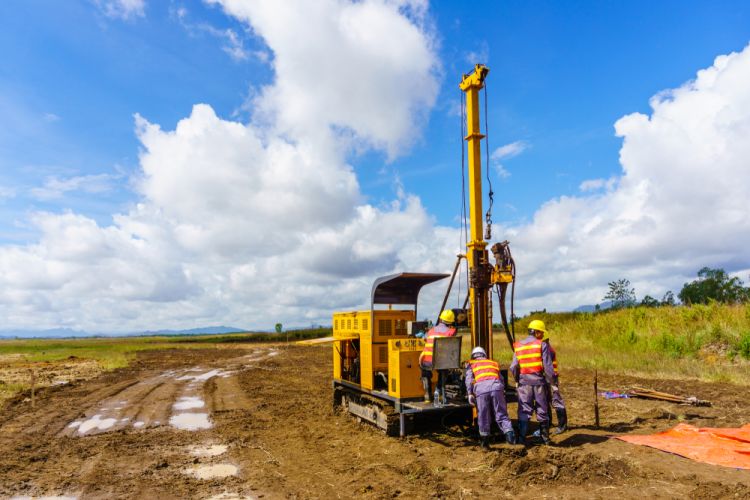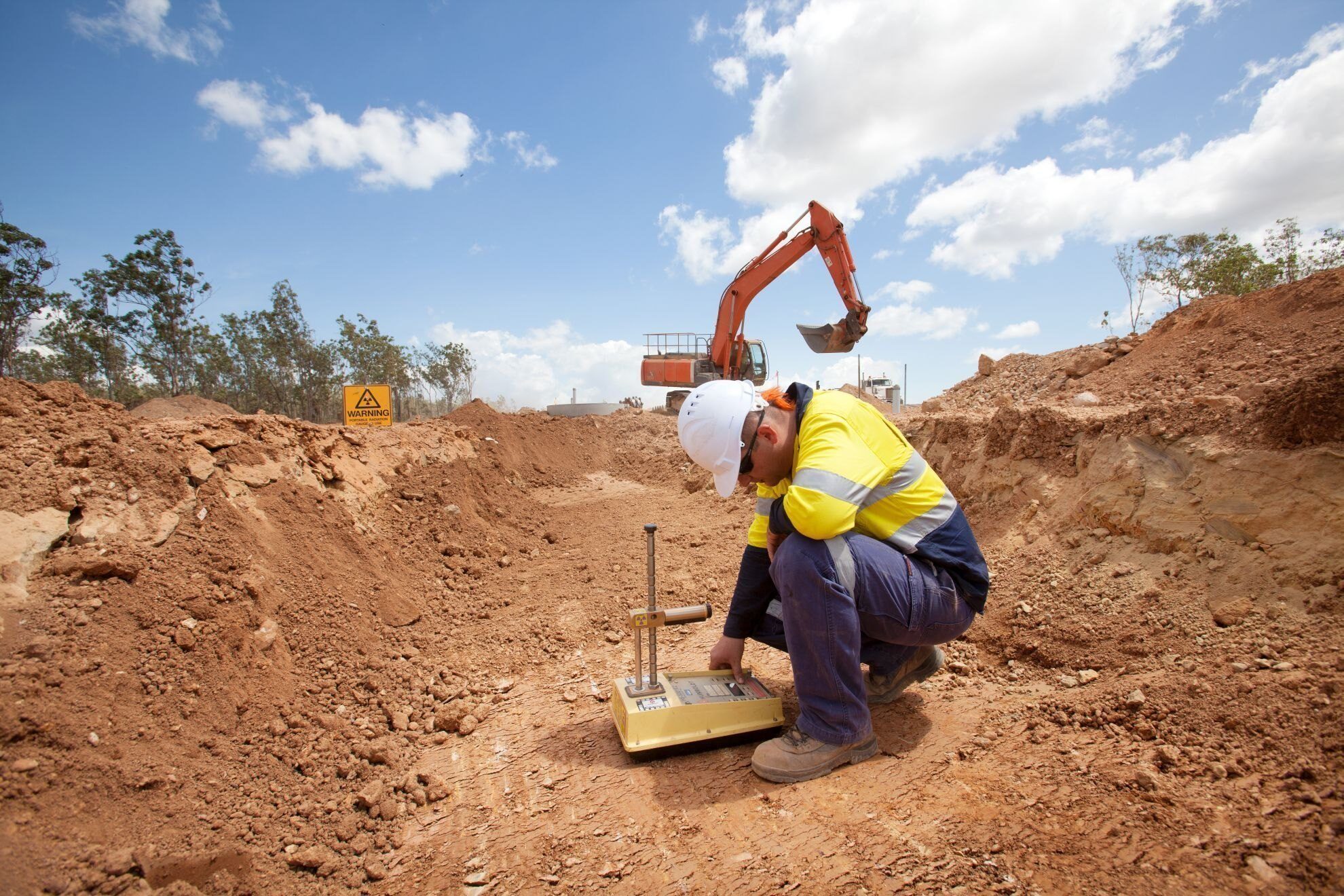The Geotechnical Engineering For Construction Projects Ideas
The Geotechnical Engineering For Construction Projects Ideas
Blog Article
How Geotechnical Engineering For Construction Projects can Save You Time, Stress, and Money.
Table of ContentsThe Single Strategy To Use For Geotechnical Engineering For Construction ProjectsExcitement About Geotechnical Engineering For Construction ProjectsLittle Known Questions About Geotechnical Engineering For Construction Projects.About Geotechnical Engineering For Construction ProjectsSome Known Incorrect Statements About Geotechnical Engineering For Construction Projects The 10-Minute Rule for Geotechnical Engineering For Construction ProjectsFascination About Geotechnical Engineering For Construction ProjectsGeotechnical Engineering For Construction Projects Things To Know Before You Buy
Coinciding with this raised intricacy comes geological and ecological elements that influence the layout of the structure, which is arguably the most vital part of any type of development. Individuals need to trust that structures, bridges, and streets will certainly stand the test of time. A Geotechnical engineer advises on how a structure can best be sustained giving its one-of-a-kind situations What's concealed listed below the surface of the ground is likely one of the most vital piece of information that a Geotechnical Engineer is after.These samples are then evaluated by the lab to figure out dirt composition (Geotechnical Engineering for Construction Projects). The break down of sand, silt, clay, and various other products existing in the soil, aids the engineer establish what special characteristics the website has and what the effects of those may be. Naturally soil composition is just one test that can be carried out on samples
The 9-Minute Rule for Geotechnical Engineering For Construction Projects
Based on these tests, there might be much more dirt borings that are drilled, or the designer might have enough details from the initial tests to make a recommendation to the client on exactly how best to continue with their task. Results are usually reported via borings logs which reveal the soil make-up and attributes at a selection of depths.
Geotechnical designers are in charge of comprehending the residential or commercial properties of natural deposits and utilizing this understanding to establish secure, cost-efficient styles for building jobs. It is a vital part of any type of civil engineering job, as it is utilized to establish the suitability of a site for building and to make sure the framework's safety and security.
This consists of performing lab tests on the samples and making use of geophysical approaches such as seismic refraction and electric resistivity studies. This data is used to examine the website's suitability for building and to determine the kind of structure that must be utilized. Geotechnical engineering examines soil problems, recognizes possible dangers, chooses an appropriate foundation system for the suggested structure, and determines the finest structure layout for an offered job.
Getting The Geotechnical Engineering For Construction Projects To Work
The framework might become unsteady or collapse without proper soil stabilisation, leading to expensive fixings and prospective injury. The stablizing procedure includes making use of numerous strategies to boost the stability of the dirt, such as compaction, grouting, and the enhancement of strengthening products. Without dirt stabilization, the threats connected with construction jobs would certainly be a lot higher, and the results much less trusted.
Geotechnical engineers conduct website investigations to assess the soil's buildings and determine possible dangers. They create and execute soil stabilization techniques, such as adding concrete, lime, or various other maintaining representatives, to improve the soil's strength and security.
7 Simple Techniques For Geotechnical Engineering For Construction Projects
Geotechnical engineers are necessary in helping to make sure that dirt stablizing is done correctly look at this website so that the framework is safe and safe and secure. Geotechnical design is also made use of to evaluate dirt conditions and recognize possible hazards. This consists of assessing prospective flooding, landslides, and various other natural calamities that can impact the structure.
Geotechnical engineers use this knowledge to carry out site investigations, dirt, and rock screening, and to interpret the outcomes to establish the appropriate layout specifications for a task. This information is utilized to guarantee that the foundation, keeping wall surfaces, inclines, and other structures improved or within the subsurface products have sufficient stability and resistance to outside lots, such as earthquakes, wind, and water.
These structures need a deep understanding of the behavior of the subsurface materials, as well as the capability to manage the effect of excavation and building and construction on the surrounding environment. Geotechnical engineers use their competence to determine the suitable style specifications for these structures, such as the shapes and size of the tunnel, the toughness of the sustaining rock, and the type and quantity of support needed.
In addition to the design and building and construction of frameworks, geotechnical design additionally plays a vital function in the recovery and maintenance of existing structures. As structures age, they may experience deterioration or other problems that affect their security and this link performance. Geotechnical engineers use their knowledge to examine the problem of these structures, determine the sources of the problems, and develop strategies to resolve them.
The Only Guide to Geotechnical Engineering For Construction Projects
In this write-up, I will go over the role of geotechnical design and the types of troubles geotechnical designers website here fix. Geotechnical designers (geotechs) are associated with nearly every kind of civil engineering project. Besides, every framework is supported by soil or rock unless it is floating, flying, or falling down.
Geotechs are generally most included at the start of a job. Geotechnical Engineering for Construction Projects. Several of the tasks that a geotech may be responsible for are exploring subsurface conditions, figuring out required laboratory screening of dirt and rock, translating the subsurface expedition outcomes, and composing records that document the website problems and offer suggestions for structures, fill specifications, incline security, and so on
It is not uncommon for geotechnical engineers to focus on just one of the areas provided above and study that subject their whole career. Geotechnical design is an important aspect of any type of civil engineering project. Regardless of exactly how terrific a framework is built, it will not be wonderful for long if the foundation is inadequate.
Indicators on Geotechnical Engineering For Construction Projects You Should Know

Oftentimes, things that might not appear vital become crucial years later on when issues emerge. One last point to remember: geotechnical design is wed to geology. No matter exactly how great your engineering expertise is, if something important is missed in the geologic characterization at a site, your experience might not conserve you.
He delights in crawling around on any landslide he can locate and spending time fly fishing on the water. I wish you appreciated this week's article by guest author Jese Vance. I hope you'll join us.
The 7-Second Trick For Geotechnical Engineering For Construction Projects

It is important to understand the soil problem before making the type and deepness of foundation required for the framework. In order to know the subsurface dirt problem, a geotechnical examination is required.
The Of Geotechnical Engineering For Construction Projects
As soon as the examination results come, the Geotechnical Engineer evaluations the record, which describes the dirt and rock homes groundwater problem and the linked threats. The sort of structure called for to construct the structure is after that established. Based on the recommendation of the Geotechnical Engineer, the structural designer then makes the framework.
Report this page